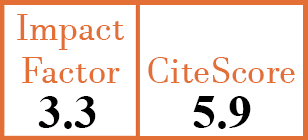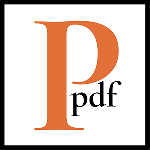Full Papers
Performance of 18F-sodium fluoride positron emission tomography with computed tomography to assess inflammatory and structural sacroiliitis on magnetic resonance imaging in axial spondyloarthritis
R. Ouichka1, F. Bouderraoui2, M. Raynal3, J. Melchior4, O. Morel5, A. Blum6, I. Chary-Valckenaere7, W. Ngueyon Sime8, V. Roch9, W. Maksymowych10, R.G. Lambert11, P. Olivier12, D. Loeuille13
- Department of Rheumatology, CHRU Nancy, France. ouichka.remy@hotmail.fr
- Department of Nuclear Medicine, CHRU Nancy, France.
- Department of Rheumatology, CHRU Nancy, France.
- Department of Rheumatology, CHRU Nancy, France.
- Department of Nuclear Medicine, CHRU Nancy, France.
- Department of Radiology, CHRU Nancy, France.
- Department of Rheumatology, CHRU Nancy, France.
- Department of Epidemiology, CIC 1433, CHRU Nancy, France.
- Department of Nuclear Medicine, CHRU Nancy, France.
- Canadian Research Education (CaRE) Arthritis, Canada.
- Department of Radiology, University of Alberta, Canada.
- Department of Nuclear Medicine, CHRU Nancy, France.
- Department of Rheumatology, CHRU Nancy, France.
CER10902
2019 Vol.37, N°1
PI 0019, PF 0025
Full Papers
Free to view
(click on article PDF icon to read the article)
PMID: 30620270 [PubMed]
Received: 19/10/2017
Accepted : 26/02/2018
In Press: 19/12/2018
Published: 18/01/2019
Abstract
OBJECTIVES:
To assess increased sacroiliac joint (SIJ) uptake on 18F-NaF PET/CT according to a qualitative and quantitative approach and to compare with MRI SIJ assessments for structural and inflammatory sacroiliitis in a population of 23 patients with spondyloarthritis (SpA) (IDRCB: 2012-A00568-35; ClinicalTrials.gov: NCT 02869100).
METHODS:
This single-center prospective study included 23 patients with active SpA according to the ASAS and/or modified NY criteria. All patients had a pelvic AP-view radiograph, MRI of the SIJ and 18F-NaF PET/CT examinations within a month, which were analysed by three blinded readers. For MRI data, the SIJs were assessed according to the ASAS criteria and SPARCC method for scoring structural lesions (erosion, sclerosis, fat metaplasia, backfill and ankylosis) and inflammation. On the 18F-NaF PET, the SIJs were scored according to a slice-by-slice approach. Abnormal uptake was assessed using a qualitative method inspired by the ASAS criteria and two quantitative approaches (the PET-activity score according to the SPARCC method and the maximum standardised uptake value (SUVmax) for each SIJ).
RESULTS:
Structural sacroiliitis was observed on 7 radiographs and 15 MRIs. 10 MRIs showed inflammatory sacroiliitis (mean SPARCC 18.7). Twenty patients had a positive PET with a mean PET-activity score of 18.2 (±8.7). The mean SUVmax for a positive PET was 1.78 vs. 1.45 for a negative one. The inter-reader reliability was good for the PET activity score (ICC= 0.56 [IC-95: 0.32; 0.76]) and good to excellent for the SUVmax (ICC=0.70–0.90 [IC-95: 0.41; 0.96]). According to a binary approach, a positive PET was not correlated with a positive MRI for structural sacroiliitis. The PET-activity score (r=0.61, p=0.001) and SUVmax (r=0.56, p=0.004) were correlated with the SPARCC inflammation score but not with structural sacroiliitis or for SPARCC structural lesions.
CONCLUSIONS:
Abnormal uptake by the SIJ on 18F-NaF PET is more frequent (87.0%) than inflammatory (43.5%) and structural sacroiliitis (65.2%) on MRI in a population of SpA patients. The PET activity score and SUVmax had good correlations with inflammatory sacroiliitis but not with structural lesions on MRI.


